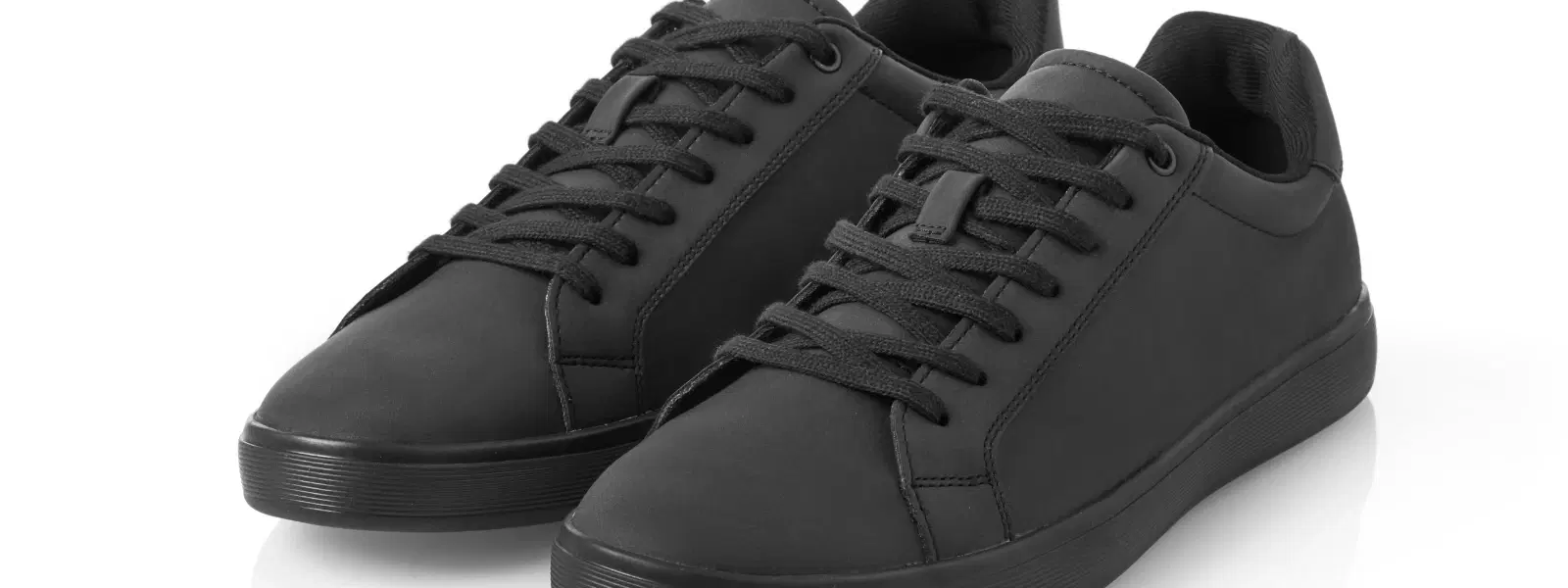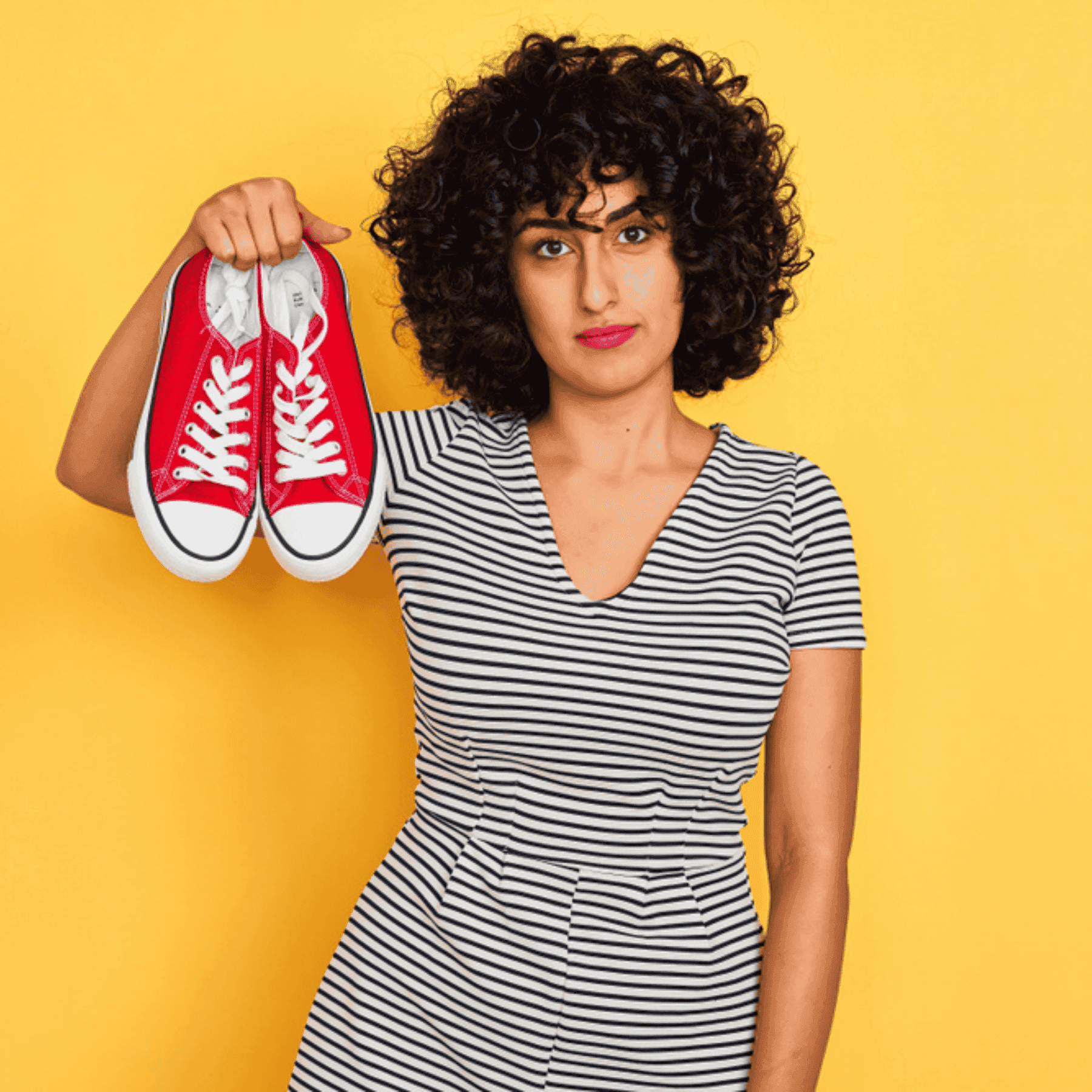
Footwear Guide
•05 min read

Barefoot shoes and minimalist footwear attract those who value authentic style and a natural approach to movement. This guide explores the key differences between these two footwear trends, explaining how each supports a healthy, active lifestyle. By reading this post, you'll develop a deeper understanding of how these shoes work and which option best suits your fashion and fitness needs.
Barefoot shoes are designed to mimic the sensation of walking or running without shoes. They allow your feet to move naturally with a design that emphasizes simplicity and authenticity. Typically, these shoes feature a zero drop sole which keeps the heel and forefoot at the same level, and a wide toe box to let your toes spread out as they naturally would. They also boast a flexible sole that adapts easily to various surfaces and are made from lightweight materials for complete freedom of movement. This design encourages natural foot activity and helps to maintain healthy foot biomechanics.
Minimalist footwear shares common goals with barefoot shoes, such as promoting natural foot movement. However, they usually incorporate a bit of cushioning and structural support for enhanced comfort on different terrains. Minimalist shoes are engineered to offer a balance by including slightly thicker soles compared to barefoot shoes. This makes them especially useful for outdoor activities like trail running and hiking where a bit of extra protection is beneficial. They still encourage foot flexibility and preserve a natural feel while offering a level of support for beginners or those transitioning from traditional athletic footwear.
Barefoot shoes emphasize a pure, unadulterated barefoot experience by removing excess cushioning and support. They focus on allowing every step to feel unmediated by technology. In contrast, minimalist footwear takes a hybrid approach, blending aspects of natural movement with a touch of modern comfort. This often means a slight cushioning that appeals to those who enjoy a natural gait but also need a soft landing on uneven surfaces.
Barefoot shoes are celebrated for their ultra-thin soles, which offer maximum flexibility and sensory feedback, making them perfect for those who truly want to feel the ground beneath their feet. Minimalist footwear, on the other hand, offers slightly thicker soles. This additional shock absorption makes them more suited for prolonged activities, such as long distance running or hiking on rugged terrains where you might need that little extra cushioning.
One of the standout features of barefoot shoes is their extra wide toe box, which promotes natural toe splay and supports proper balance. Minimalist footwear typically provides a moderately wide toe box, striking a balance for users transitioning from more structured conventional shoes. This design caters well to anyone looking to enjoy the benefits of a natural foot position without a sudden leap into a completely unstructured shoe.
Barefoot shoes are perfect for those who are experienced with a barefoot lifestyle and are looking for an unfiltered natural running or walking experience. Minimalist footwear serves as an excellent starting point for beginners or individuals wishing to gradually embrace natural running shoes. This makes it a friendly option for anyone beginning their journey toward healthier foot movement and a more organic style of living.
Pro Tip: Enhancing Natural Movement
The wider toe box in barefoot shoes not only prevents foot deformities but can also enhance balance and stability during physical activities. For those new to natural running shoes, starting with minimalist footwear may ease the transition by providing just enough support while still encouraging natural movement.

Barefoot shoes offer numerous advantages. They encourage a natural gait, which helps to strengthen foot muscles and improve overall stability. By promoting the active engagement of your muscles, these healthy foot shoes can even reduce the risk of injuries. Additionally, their design improves proprioception, letting you stay aware of your foot's positioning during each step, ultimately supporting a more confident stride whether on a casual walk or an energetic run.
Minimalist footwear is designed to offer a balance between nature and support. They provide a middle ground by protecting your feet on challenging terrains while maintaining a natural feel that is essential for corrective foot health. Whether you’re on a trail run or exploring new city routes, minimalist options deliver adequate shock absorption as well as the benefits of a lightweight and flexible sole footwear design. They are an ideal choice for individuals seeking a gradual switch from conventional sneakers to more foot-friendly options.
Choosing the right shoe largely depends on your daily activities and personal goals. If you are looking for shoes that mimic a barefoot feeling with minimal interference, barefoot shoes are well-suited for everyday wear and flat-surface running. However, if you plan on tackling varied terrains—such as during trail running or hiking—minimalist footwear might be more appropriate because of its added cushioning and support.
Think about what you want to achieve with your footwear. Are you aiming to strengthen your foot muscles and improve balance? In that case, opting for barefoot shoes can be beneficial. Alternatively, if you desire a bit more protection while still engaging in natural movement, minimalist footwear offers a useful compromise by providing slight cushioning without compromising authentic foot motion.
It is essential to test both styles before making your final decision. Walk around in different styles to assess comfort, fit, and flexibility. Pay close attention to the toe box width and sole thickness to see which aligns best with your foot shape and lifestyle. Wearing both options can help you determine the best match for your daily adventures, whether that's a busy day in the city or a weekend of light outdoor activities.
Insight Corner: Transitioning Smartly
Did you know? Transitioning from traditional shoes to barefoot or minimalist footwear requires patience and gradual adaptation. Start with short walks and slowly increase your usage to let your muscles and ligaments adjust comfortably to the new style.
If you're new to the world of barefoot shoes, especially for running, it's important to ease into the experience. Begin with short runs to allow your body to adjust naturally. This gradual approach can help prevent potential strains and injuries. Think of it as a journey where every small step leads to better strength and endurance in your foot muscles.

Along with switching footwear, incorporating simple foot exercises can be a game changer. Activities like toe curls, arch lifts, and balance exercises help in building strength and preparing your feet for the transition. Consistent practice not only boosts your performance but also minimizes the risk of strain while wearing your new natural running shoes or ergonomic shoes guide.
For beginners, selecting a soft and forgiving surface is key. Start with grass or dirt trails to lessen the impact compared to harder surfaces. As you gain confidence and strength, you can slowly progress to more challenging environments. This method of gradual exposure ensures you receive the full benefits of barefoot running tips, keeping your feet both safe and happy.
Barefoot shoes promote natural foot movement, strengthen muscles, and improve balance by closely mimicking the feeling of walking barefoot.
Yes, minimalist footwear provides a gradual transition for those new to barefoot-style shoes, offering a blend of natural movement and slight cushioning.
Barefoot shoes feature a zero drop design along with minimal cushioning and support, while zero drop shoes may still include some padding for comfort.
Running on hard surfaces can be risky for beginners. It is advisable to start with softer terrains like grass or trails and gradually progress to harder surfaces.
Yes, barefoot shoes can help alleviate foot pain by encouraging natural toe splay and healthier biomechanics, which may reduce pressure and discomfort over time.
Barefoot shoes and minimalist footwear each offer unique benefits tailored to different lifestyles and activity levels. While barefoot shoes provide that genuine, unfiltered connection to the ground with an emphasis on natural movement, minimalist footwear strikes a balanced approach for those easing into this trend. Understanding these differences helps you make an informed decision that complements your personal style and foot health goals. Explore the world of natural, foot-friendly shoes and embrace a more vibrant, active lifestyle through thoughtful footwear choices.